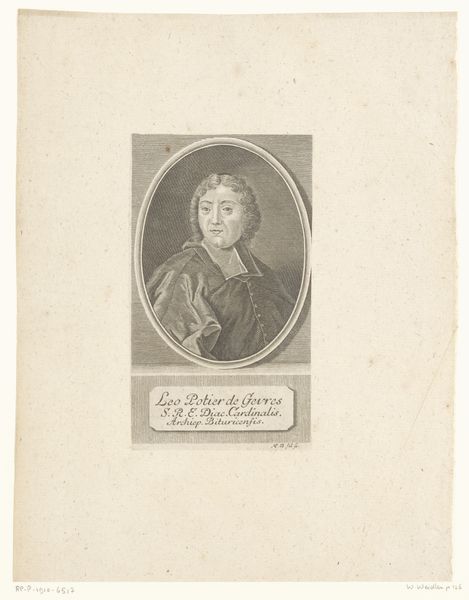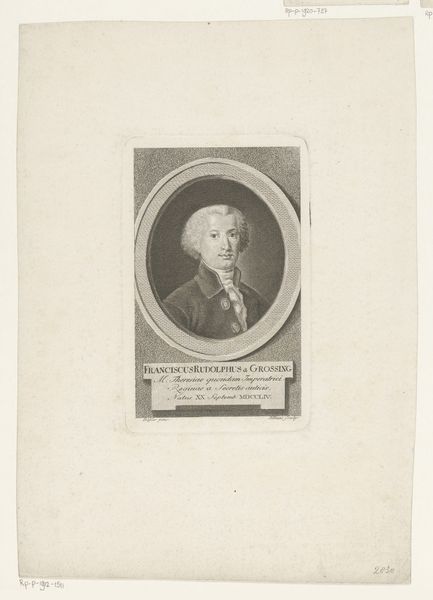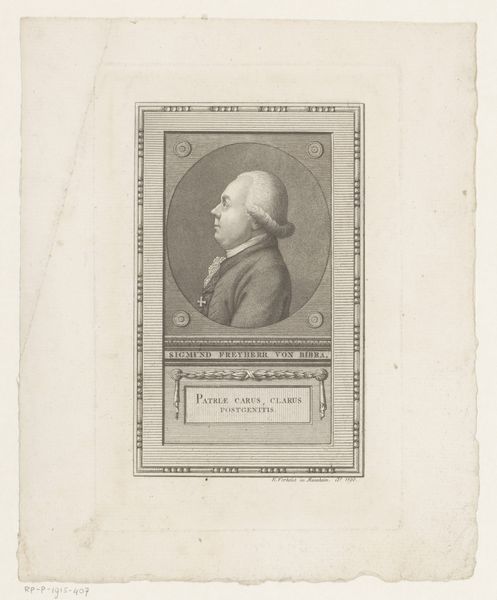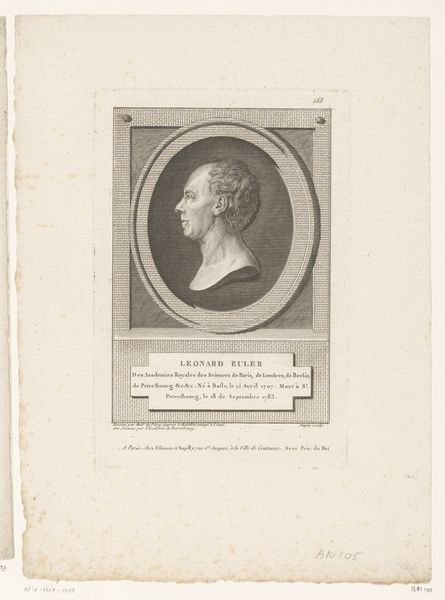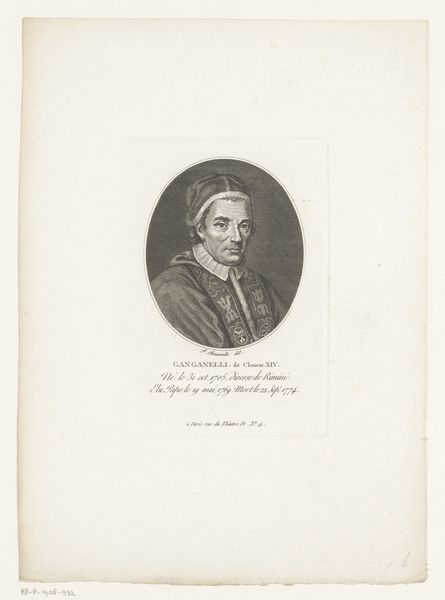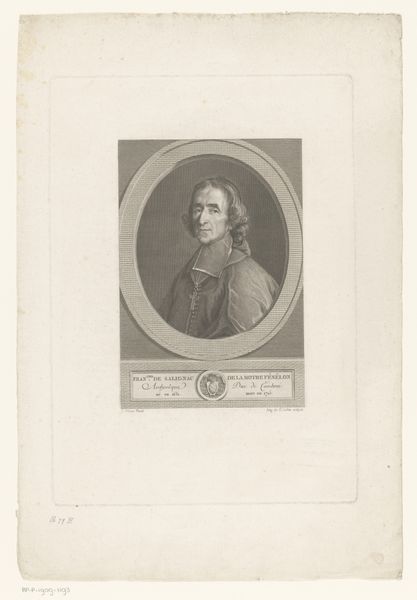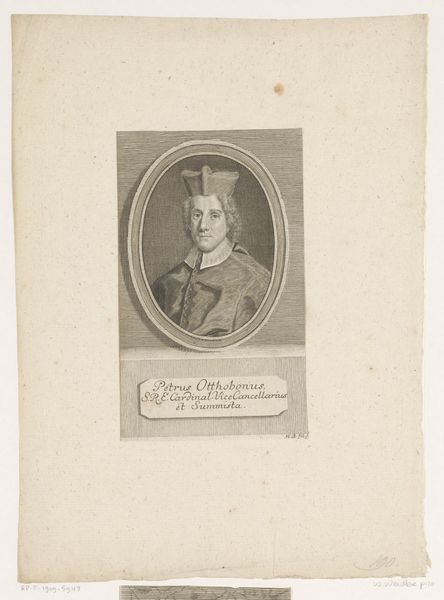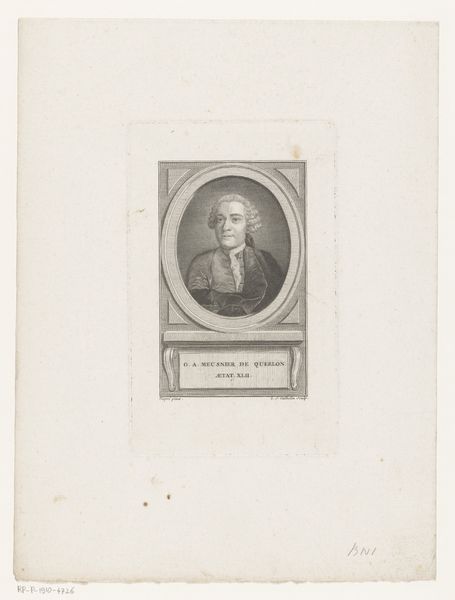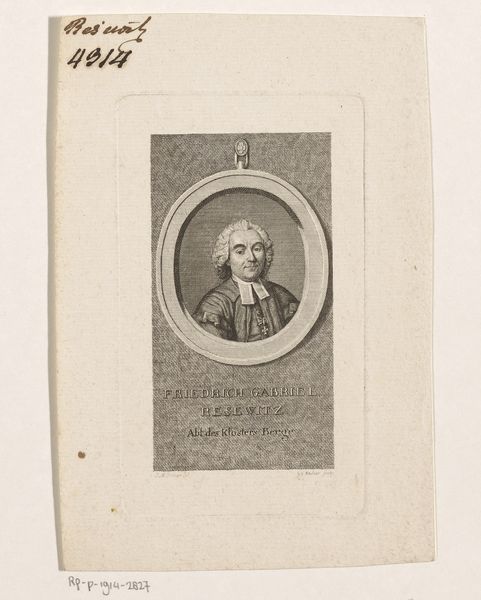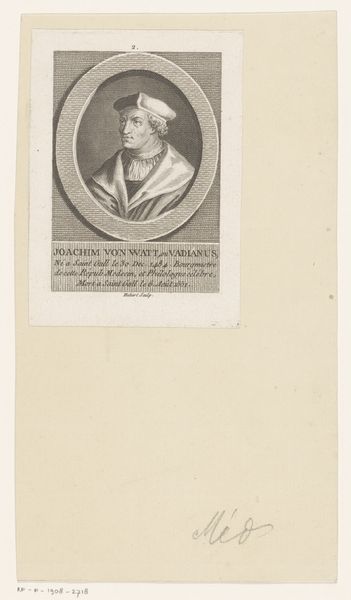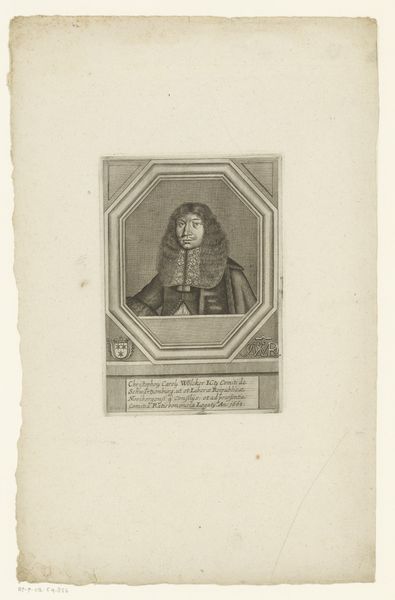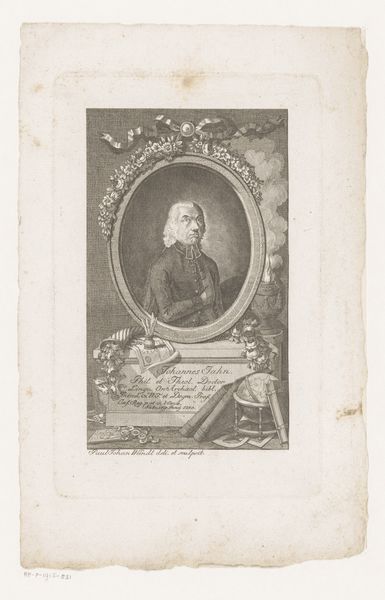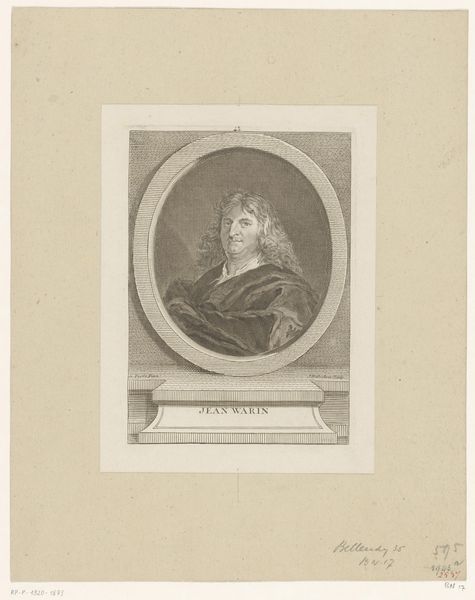
engraving
#
portrait
#
neoclacissism
#
old engraving style
#
15_18th-century
#
engraving
Dimensions: height 185 mm, width 128 mm
Copyright: Rijks Museum: Open Domain
Curator: Welcome to the Rijksmuseum. Here we have a portrait of Benjamin Franklin, created in 1777 by Pierre Adrien Le Beau. This artwork, rendered as an engraving, captures a significant figure of the 18th century. Editor: My first impression is one of formality, but also…softness. The oval frame, the rendering of fabric, everything has rounded, almost pillowy contours. Is this intentional? Curator: Absolutely. The softness softens the edges of revolutionary ideas and actions in the Neoclassical frame that's happening more broadly in French art and beyond. Franklin here isn't simply presented as an elder statesman, but also almost as an allegorical figure, embodying the ideals of the enlightenment. It's crucial to remember the revolutionary context, both socially and politically, and what his representation aims to convey and to conceal. How do the intersectional considerations affect our view of this image? Editor: In terms of formal elements, the engraver’s masterful use of line creates subtle textures, right? Look closely at the rendering of his fur hat and the rich fabric of his coat. It gives a great amount of tonal depth, even though it is just made up of black lines on white paper. How is the framing important in its reading? Curator: The portrait's ornate Neoclassical framing acts as both an aesthetic boundary and a visual anchor, stabilizing this image within broader discussions of 18th-century revolutionary movements and ideological exchanges. That framed boundary then invites you to delve deeper, pushing us to see past the surface representation into its larger web of context, as you’ve suggested by your read of its depth. Editor: And how Franklin meets the gaze... directly, assuredly. What did it mean in the portraiture language of the day? It really adds to that initial impression. Curator: His steady gaze does carry significance. Franklin wasn't born into privilege, and a gaze of equal standing in portraiture challenged class structure of representation that circulated power and political standing through particular imagery. This element invites a deeper investigation into his multifaceted identities as an inventor, diplomat, writer, and political theorist. Editor: Thinking about it, I am noticing his clothing contrasts starkly with what I assume are neoclassic ideals happening in the lines. Fascinating. Curator: It shows you how social context gives clues into the intentioned tension inside even something presented with rigid adherence. Editor: Seeing how these factors interact has changed how I see this image. Curator: And understanding the historical currents behind these artworks helps them connect even now.
Comments
No comments
Be the first to comment and join the conversation on the ultimate creative platform.
